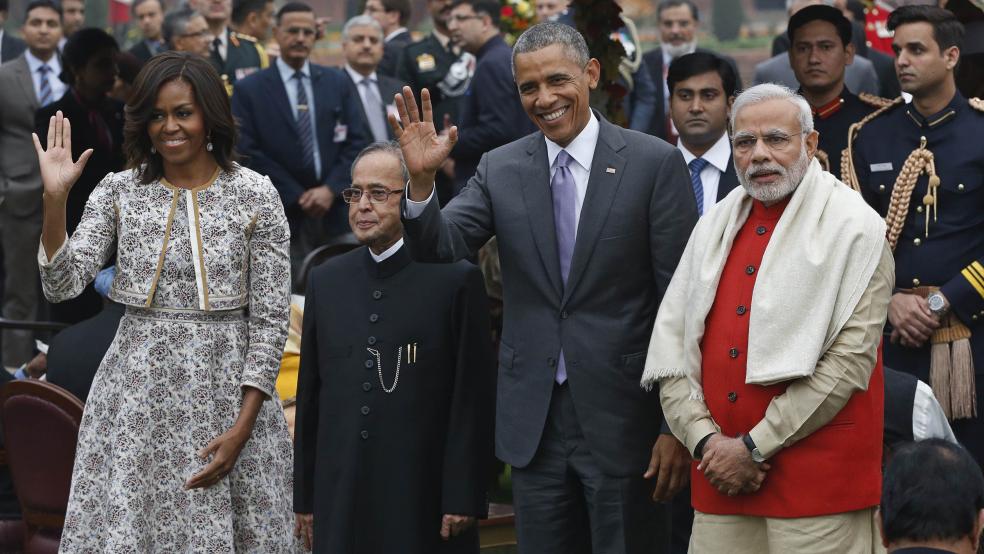Obama's visit is a fresh bid to make Asia's third-largest economy an enduring strategic partner and nurture his friendship with Prime Minister Narendra Modi, who broke with protocol to meet and bear-hug Obama when he landed in New Delhi.
Following are some key areas likely to be discussed during his visit:STRATEGIC IMPORTANCEIndia's size, location, fast-growing economy and potential as a democratic counterbalance to China makes the South Asian nation an increasingly important element of U.S. military and commercial strategy. Prime Minister Narendra Modi's assertiveness in the region has already aligned India more with Washington, but they do not see eye-to-eye on Pakistan, and India is worried about the exit of U.S. troops from Afghanistan. India wants greater cooperation on terrorism and access to high-technology goods for civilian and military use.DEFENCEThe United States overtook Russia as the biggest weapons supplier to India, the Indian government said in August. India is the world's biggest weapons importer. U.S. officials confidently predict deals will be unveiled on the trip, including possibly joint production of Raven drones and systems for Lockheed's C-130 transport planes. Standing in the way of closer ties are Indian curbs on foreign companies owning majority stakes in defence companies and U.S. curbs on exporting certain technologies.CIVIL NUCLEARU.S. and Indian officials are trying to unblock billions of dollars of potential trade in nuclear energy, but it's not clear if an agreement can be reached in time for Obama's visit.The two sides signed a landmark civilian nuclear deal in 2008. Holding up the trade is India’s reluctance to pass legislation shielding suppliers from liability in the event of a nuclear accident, a deviation from international norms.CLIMATE CHANGEThe United States and India are expected to announce efforts to work together to combat climate change ahead of key global talks in Paris later this year. India, the world’s third largest carbon emitter, is reluctant to follow the United States and China in committing to a peak year for emissions on the grounds it needs economic growth to alleviate poverty. Instead, India is likely to trumpet its plans for a rapid expansion of renewable energy, for which it needs U.S. investment and technology, and improving energy efficiency.RENEWABLE ENERGYIndia wants U.S. companies to help lead investments of $100 billion in renewable energy. Modi promised to help renewable energy companies overcome entry to the Indian market during his trip to Washington last year. A barrier to investment is a requirement that foreign companies make much of the equipment within India, which business leaders say will push up costs.ECONOMIC TIESModi and Obama last year targeted a five-fold increase in annual trade to $500 billion. But U.S. business leaders have been frustrated by limits on their access to the Indian market, and battles over intellectual property protection. India and the United States have also filed several cases against each other at the World Trade Organisation over protection of their domestic steel, poultry and solar industries. India is trying to shed an image of arbitrary taxation on foreign companies and may be close to a bilateral tax deal with Washington. (Reporting By Andrew MacAskill; Editing by Frank Jack Daniel, Raju Gopalakrishnan and Ian Geoghegan)Factbox: Obama and Modi aim high with India summit

© Jim Bourg / Reuters



